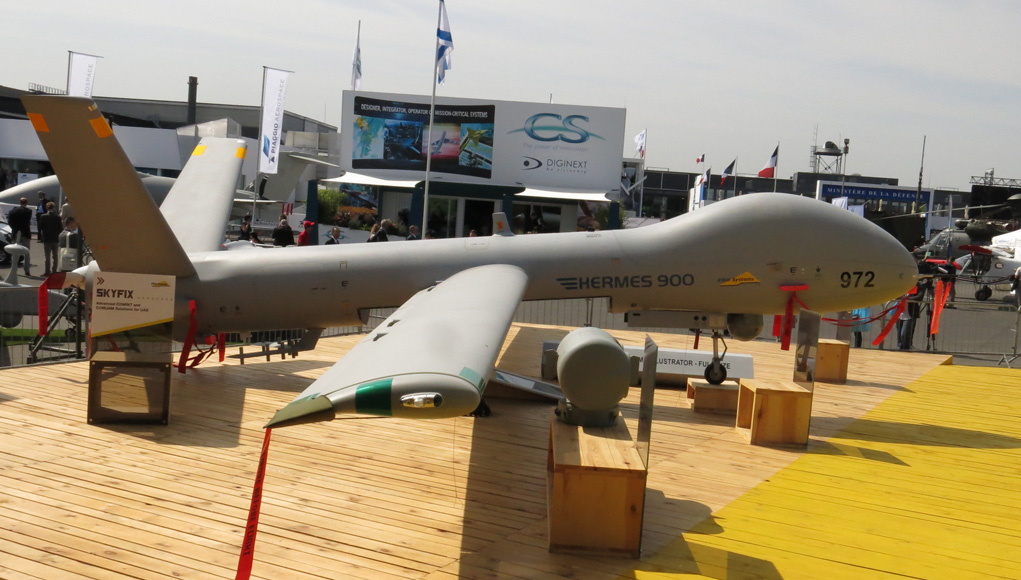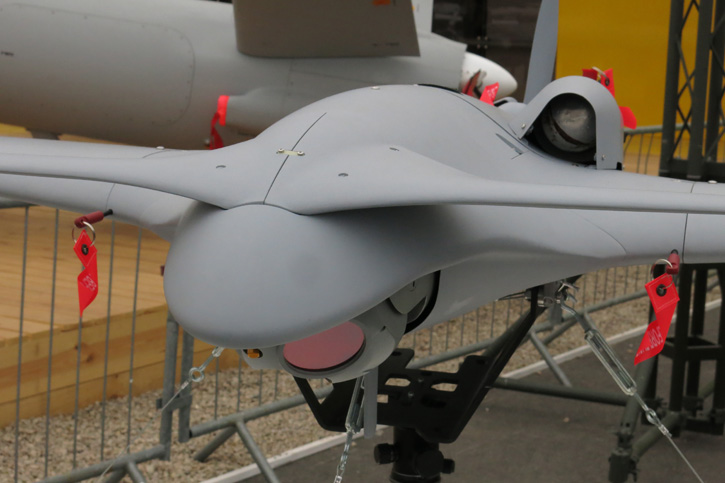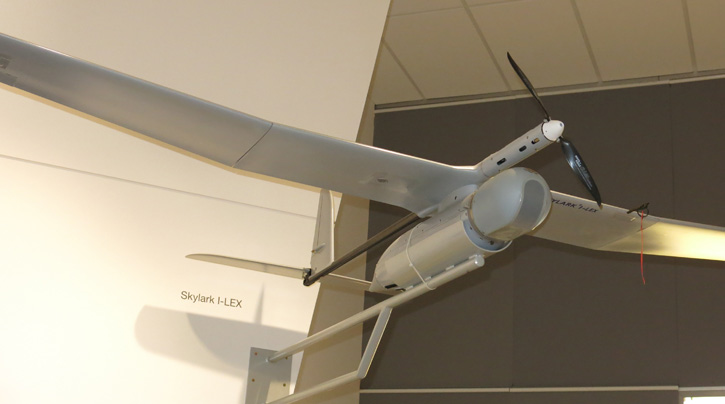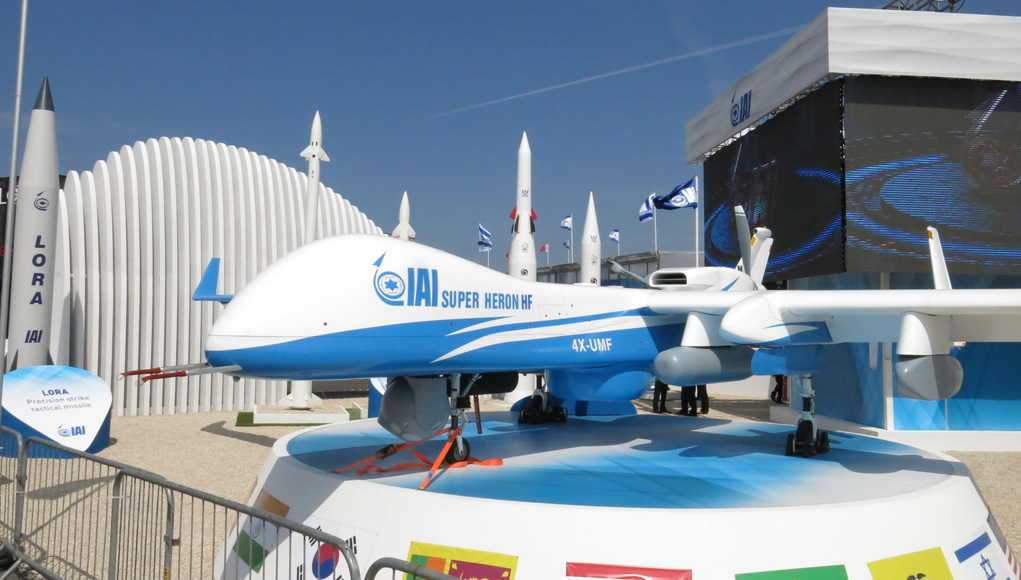As a pioneer in unmanned aerial systems, Israel has been a leading supplier of such systems for military and government users since the mid-1980s. Heading the field of suppliers have been two of the country’s leading arms concerns – Israel Aerospace Industries (IAI) and the Elbit Systems Group. Thirty years later, these UAV primes continue to dominate the global market with Medium Altitude Long Endurance (MALE) UAVs. But other players have also entered this burgeoning market, which now includes dozens of small- and medium-size companies offering complete supply chains – from small- and micro-UAS, to avionics, components, actuators and controllers, propulsion and power sources, mission payloads, and training.
Some of these capabilities on display at the Paris Air Show include the three leading Israeli MALEs – the Super Heron from IAI, the Hermes 900 from Elbit Systems and the twin-engine Dominator XP from Aeronautics. Super Heron is making here its European debut. The new drone offers improved payload capacity and optional Heavy Fuel Engine configuration.
Other systems on display include tactical UAS, such as Aerostar BP, the latest version of the Aerostar from Aeronautics. The new version is designed with open avionic architecture, supporting multiple payloads configurations weighing up to 50 kg. Such systems include laser designating EO, radar, COMINT and SIGINT payloads. The new version also supports automatic takeoff and landing (ATOL).

Elbit Systems is also highlighting the Universal Ground Control Station, (UGCS) a common control station for its Hermes 900 and -450 UAS. The system is capable of concurrently control two UAS missions simultaneously using two separate communications links. With high level of autonomy that enables the operator to focus on mission execution, rather than actually flying the air vehicle the basic mission is controlled by a single operator. The system supports different applications, for example, maritime patrol for which, in addition to radar patrol and AIS operation, it provides embedded situation awareness and command and control capabilities.

An innovative hybrid propulsion system (HPS) developed by Ashot Ashkelon for use by general aviation aircraft also has application for UAVs. Designed as a retrofit kit for Rotax 912 or 914 engines, the system incorporates a new transmission developed by Ashot, replacing the original gearbox, motor-alternator and high capacity lithium-polymer battery for power storage. The HPS increases available power on takeoff and dashing, enable ‘silent cruise’ mode, by shutting off the engine and cruising on electrical power, or be used as emergency propulsion, in case of engine cutoff. The new transmission can also employ thrust reversal, reducing landing run on short landing strips.

Aeronautics is introducing its latest Tactical Small UAS model – Orbiter 3LE. Unlike the standard Orbiter 3 that has been operating with more than 10 customers worldwide, an internal combustion engine powers the new LE, extending the vehicle’s mission endurance from seven to 15-20 hours. The drone can carry different payloads at a weight of 3 kg. One of the payloads carried by Orbiter 3 is the T-STAMP from Controp, carrying day/night sensors including an HD day camera and cooled IR imager. Aeronautics is also offering an electrically-powered version of the Orbiter 3B, an enhanced version that supports longer mission endurance and datalink with high data rate, supporting the high resolution imagery obtained by the new EO payload.
Among the small and miniature UAS, Elbit Systems is introducing the Skylark I-LEX. This latest version of the Skylark is based on more than 10 years of operational experience with 30 customers worldwide.

Skylark is a man-portable electric propelled UAS, best fitted for organic “beyond the next hill” reconnaissance, counter insurgency and force protection. The latest version, designated Skylark I-LEX is already operational as the standard battalion level UAS of the Israeli Land Forces, where it has accumulated thousands of operational sorties.
The LEX version is enhanced with safety features designed for improved airworthiness, an advanced, stabilized day/night EO payload. Mission performance is enhanced through the use of automatic tracking, automatic motion detection and geo registration through video image processing, enhancing target accuracy. Equipped with algorithms derived from Elbit Systems’ Hermes family of larger UAS, Skylark I-LEX can be controlled by the fly-by-camera mode and other autonomous modes, allowing automatic tracking of fixed and moving targets. Communications now employs secured, encrypted datalink. The ground control system (GCS) can operate two aerial vehicles at a distance of 40 km. The GCS has been redesigned with modern user interface with multi-lingual support. Remote users are also supported through Remote Video Terminal allowing payload control by forward deployed operators.













